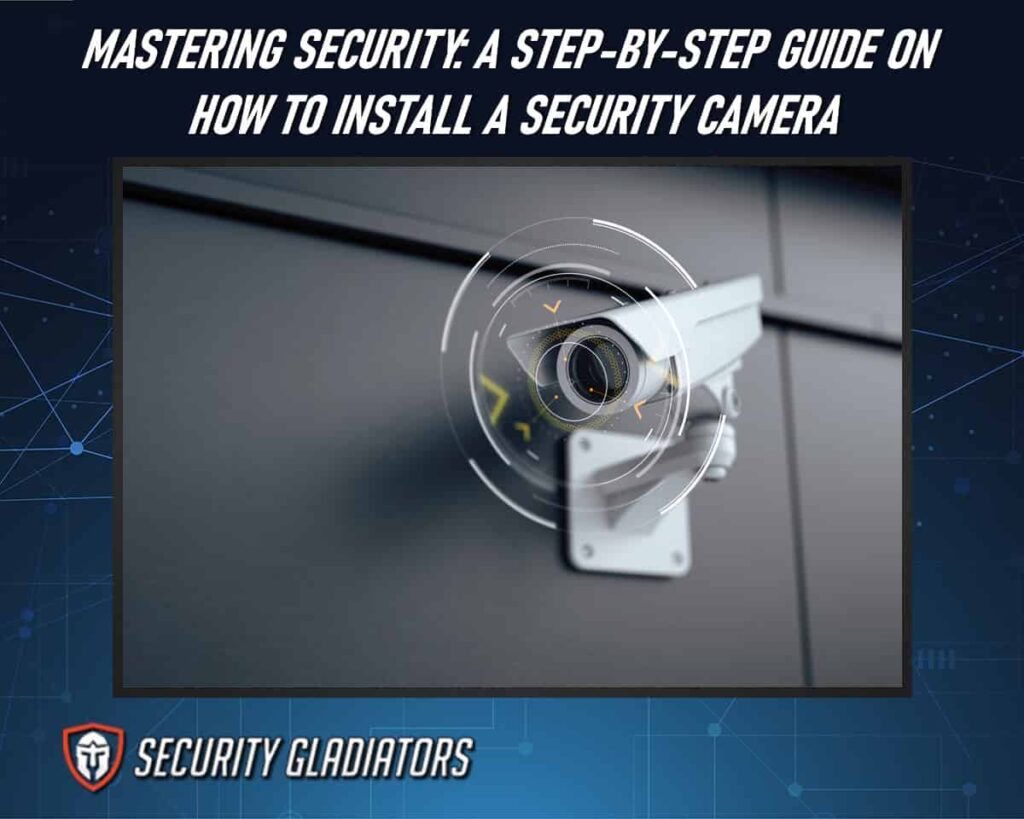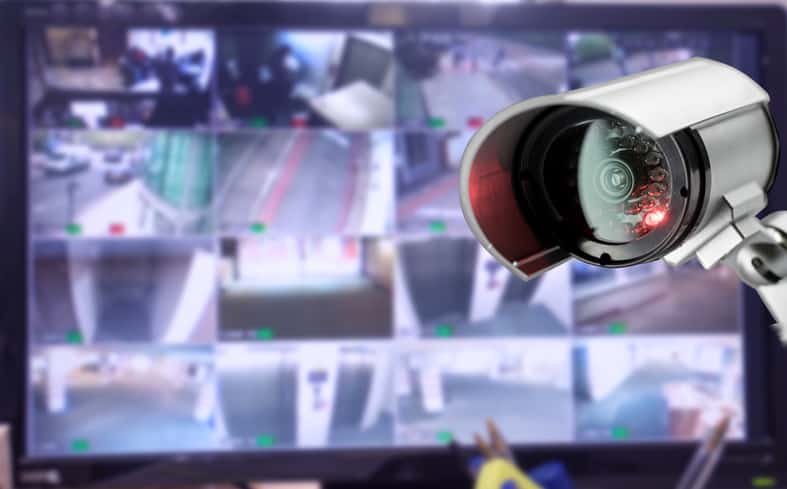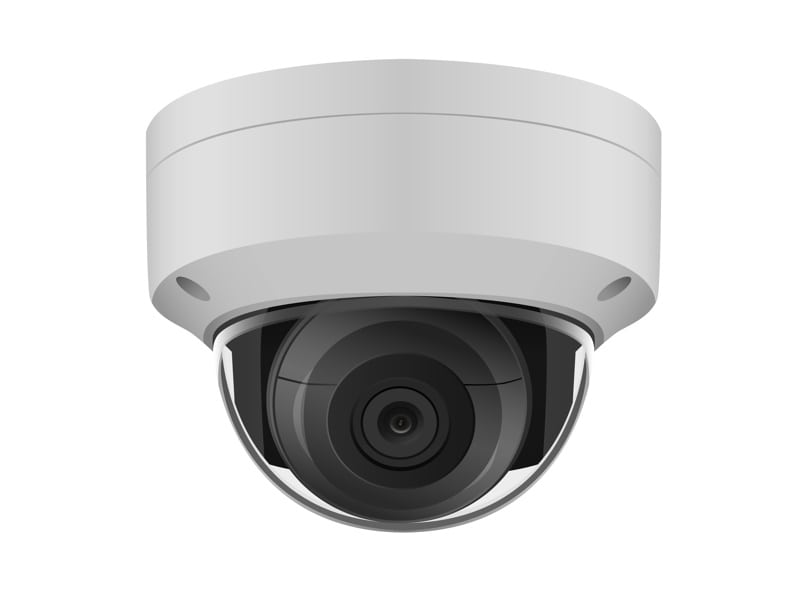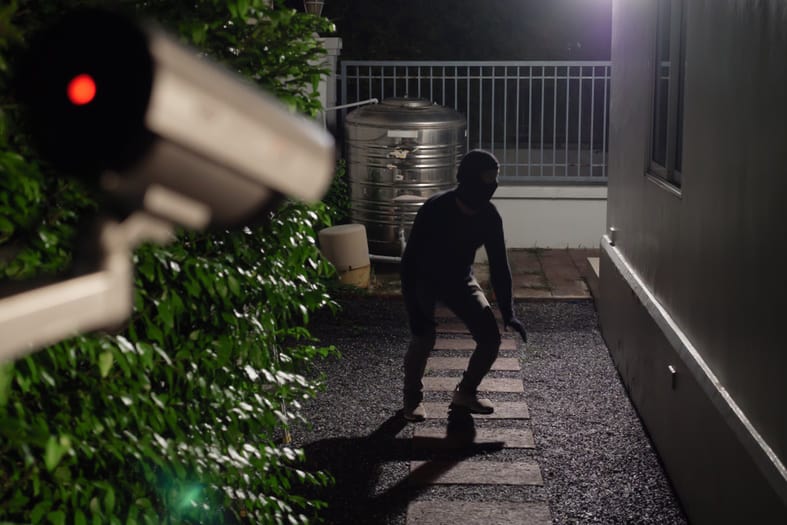
Table of Contents
The Importance of Security Cameras
Security cameras play a pivotal role in modern society, serving as vigilant guardians that enhance safety and protect property in various settings. Their importance cannot be overstated, and here are some compelling reasons why security cameras are indispensable:
Crime Deterrence
Perhaps the most obvious benefit is their ability to deter criminal activity. The mere presence of visible cameras often discourages potential wrongdoers from trespassing or engaging in illegal activities, effectively preventing crimes before they occur.
Evidence Collection
Security cameras provide indisputable evidence in the event of a crime or dispute. This evidence can be invaluable in helping law enforcement identify and apprehend suspects, as well as in supporting insurance claims or legal cases.
Peace of Mind
Knowing that your home, business, or public space is under constant surveillance brings peace of mind. It allows individuals to feel safer, both at home and at work, and fosters a sense of security within communities.
Remote Monitoring
Modern security cameras often come with remote monitoring capabilities, allowing homeowners and business owners to keep an eye on their properties from anywhere with an internet connection. This feature is particularly valuable when traveling or managing multiple locations.

Employee Productivity
In a business setting, security cameras can promote employee accountability and productivity. Knowing they are being monitored can discourage unauthorized breaks or improper conduct, improving overall workplace efficiency.
Visitor Verification
Security cameras are useful for verifying the identity of visitors before granting access to a property. This is especially important in residential communities or commercial buildings where controlling access is essential.
Documentation of Incidents
Beyond preventing crime, security cameras document everyday incidents such as accidents, altercations, or property damage. This documentation can be invaluable for internal investigations or as evidence in legal matters.
Tips for Installing a Security Camera
The following steps show you how to install security cameras:

1. Assess Your Vulnerabilities
One must begin by evaluating their vulnerabilities when considering the implementation of surveillance systems. This assessment involves identifying potential weaknesses in security, such as blind spots, entry points, or areas prone to unauthorized access. By understanding these vulnerabilities, one can determine the specific locations where security cameras should be installed for maximum effectiveness.
When it comes to security cameras, there are various types that can be utilized based on the identified vulnerabilities. Wireless security cameras offer flexibility in terms of installation and can be easily placed in areas where running wires may not be feasible. Indoor security cameras are designed to monitor indoor spaces such as offices or homes and provide a clear view of any activities within those areas. On the other hand, outdoor security cameras are specifically designed to withstand harsh weather conditions while capturing high-quality footage of outdoor spaces.
A thorough vulnerability assessment should consider both physical and digital threats. In addition to choosing the right type of camera for each location, one should also assess potential cybersecurity risks associated with surveillance systems. This includes ensuring that the cameras are securely connected to a network and regularly updated with firmware patches to prevent unauthorized access or hacking attempts.
2. Choose the Right Security Camera System
To make an informed decision about the appropriate security camera system to implement, it is crucial to consider factors such as specific surveillance needs, budget constraints, and the desired level of monitoring coverage.
Firstly, identifying the surveillance needs is essential in determining the type of security camera system required. This involves assessing whether outdoor cameras are needed to monitor entrances and perimeters or if indoor cameras are necessary for monitoring internal spaces. Outdoor cameras are designed to withstand harsh weather conditions and can provide a wide field of view, making them ideal for covering large areas. On the other hand, an indoor camera may have features like pan-tilt-zoom (PTZ) capabilities that allow users to remotely control and adjust the camera’s direction.
Secondly, considering budget constraints is vital when choosing a security camera system. Wired cameras generally require professional installation due to their need for physical wiring connections. While this may result in higher upfront costs, wired systems often offer better reliability and higher video quality compared to wireless options. Alternatively, wireless cameras eliminate the need for extensive wiring installations but may experience signal interference or range limitations depending on environmental factors.
Lastly, determining the desired level of monitoring coverage plays a significant role in selecting a suitable security camera system. Some systems offer 24/7 continuous recording while others only record when motion is detected. Additionally, advanced features like facial recognition or license plate recognition can enhance monitoring capabilities but may come at an additional cost.
3. Determine the Ideal Camera Placement
When installing security cameras, it is important to carefully assess the purpose they serve. Different areas may require different types of surveillance cameras with varying capabilities. For instance, high-resolution cameras with zoom features might be necessary for monitoring entrances or parking lots where facial recognition or license plate identification may be needed. On the other hand, wide-angle cameras can be more suitable for covering large open spaces such as warehouses or outdoor areas. By understanding the specific requirements of each area, one can determine the appropriate types and specifications of cameras to install.
Identifying potential blind spots is another critical consideration when determining camera placement. Blind spots refer to areas that are not within the field of view of any installed cameras. These gaps in surveillance coverage can provide opportunities for unauthorized activities or breaches in security. It is important to conduct a thorough analysis of the premises and identify any potential blind spots using floor plans or site surveys. By strategically placing cameras in these vulnerable areas, one can ensure comprehensive monitoring and minimize risks.
Moreover, selecting strategic locations for camera installation is essential for optimizing their effectiveness. Cameras should be placed at entry points such as doors or windows to capture any suspicious activities during unauthorized access attempts. Additionally, key areas like cash registers or storage rooms should have dedicated camera coverage to deter thefts and monitor employee behavior effectively. It is advisable to position cameras at an elevated height and angle so as not to obstruct their view by obstacles like furniture or vegetation.
4. Install Outdoor Security Cameras
Outdoor cameras are exposed to various weather conditions, so it is crucial to choose cameras that are specifically designed to withstand rain, snow, extreme temperatures, and other environmental elements. Look for outdoor cameras with an IP65 or higher rating to ensure durability and longevity. Additionally, the positioning of the camera plays a significant role in maximizing its effectiveness. Consider the areas you want to monitor and determine the optimal viewing angles for capturing clear footage. It is recommended to install cameras at strategic locations such as entry points, driveways, and backyard areas for comprehensive surveillance coverage.
When it comes to installation, there are two main types of outdoor security cameras: wired and wireless. Wired security cameras require running wires from the camera location to a central recording device or power source. This method ensures a reliable connection but may require professional assistance for cable routing and installation. On the other hand, wireless outdoor cameras offer flexibility in terms of placement since they do not require physical cables for connectivity. However, these cameras still need a power source nearby.
To install an outdoor camera system effectively:
- Choose weather-resistant cameras with appropriate IP ratings.
- Determine optimal viewing angles based on surveillance needs.
- Select between wired or wireless camera systems based on preferences.
- Ensure proper power supply or consider battery-powered options.
5. Install Indoor Security Cameras
Indoor security cameras serve as vigilant sentinels, discreetly positioned throughout the interior of a home to provide unobtrusive surveillance and protection. These cameras are an integral part of comprehensive home security systems, offering homeowners peace of mind by capturing high-quality video footage of any activities within their living spaces.
Installing indoor security cameras involves careful consideration of various factors such as camera placement, coverage area, and connectivity options. When setting up indoor security cameras, it is crucial to strategically position them in areas that maximize their effectiveness. High-traffic areas like hallways, entrances, or common rooms are ideal locations for installing these cameras as they can capture any potential intruders or suspicious activities. Additionally, ensuring proper coverage is essential to minimize blind spots and ensure comprehensive video surveillance. Homeowners should consider the field of view provided by each camera and strategically place them to cover all vulnerable areas.
Furthermore, when choosing indoor security camera systems, it is important to consider connectivity options that suit individual needs. Wi-Fi-enabled cameras offer flexibility in terms of installation since they do not require additional wiring for connectivity. These cameras can be easily integrated into existing home networks and accessed through mobile devices for remote monitoring. On the other hand, wired camera systems provide a reliable connection but may require professional installation due to their wiring requirements.
6. Set Up a Video Surveillance System
A video surveillance system is an integral component of any robust security infrastructure, providing real-time monitoring and recording capabilities for enhanced safety and protection. To set up a video surveillance system, it is crucial to carefully plan the placement and installation of security cameras. This involves identifying key areas that require monitoring, such as entry points, parking lots, or high-value assets. Additionally, consideration should be given to factors like lighting conditions and potential blind spots to ensure optimal camera coverage.
When selecting cameras for an outdoor environment, it is essential to choose models specifically designed for such conditions. Outdoor security cameras are typically weatherproof and equipped with features like infrared night vision to provide clear images even in low-light situations. Additionally, wired camera systems are often preferred over wireless options for their reliability and consistent performance.
Once the appropriate cameras have been selected, it is important to establish a central hub or network video recorder (NVR) where all footage will be stored. The NVR serves as the backbone of the video surveillance system by capturing and storing high-quality recordings from each camera feed.
Note:
Setting up a comprehensive video surveillance system requires meticulous planning and attention to detail. Strategically installing suitable security cameras throughout both indoor and outdoor spaces using wired connections where possible ensures reliable performance under varying environmental conditions. With this foundation in place, organizations can achieve an effective deterrent against criminal activities while maintaining a secure environment for individuals within their premises.7. Configure Remote Access to Your Cameras
To configure remote access to your cameras, it is important to ensure that the necessary network settings are properly configured and that appropriate security measures, such as strong passwords and encryption protocols, are in place. This will help protect your system from unauthorized access and potential security breaches.
Here are some steps to follow when configuring remote access for your security camera installation:
Network Configuration
Begin by setting up a static IP address for each of your cameras or network video recorders (NVRs). This ensures that the devices have a consistent and easily accessible IP address on your network. It is also important to open the necessary ports on your router or firewall to allow remote access connections.
Port Forwarding
To enable remote access, you will need to configure port forwarding on your router. This allows incoming requests from outside networks to be forwarded directly to the IP addresses of your cameras or NVRs. By specifying which ports should be forwarded, you can control which services or applications can be accessed remotely.
Dynamic DNS
If you do not have a static public IP address provided by your internet service provider (ISP), you can use dynamic DNS (DDNS) services. DDNS allows you to assign a domain name to your changing IP address so that you can easily connect remotely without needing to know the current IP.
Security Measures
To enhance the security of your remote access setup, consider implementing additional security measures such as two-factor authentication (2FA) or virtual private networks (VPNs). 2FA adds an extra layer of protection by requiring users to provide two forms of identification before accessing the system, while VPNs create secure tunnels for data transmission over public networks.
8. Understand Camera Features and Settings
One significant advancement in security camera technology is the availability of battery-powered and wireless options. Battery-powered cameras eliminate the need for complicated wiring installations, providing flexibility in camera placement and reducing potential vulnerabilities. Wireless security cameras, on the other hand, utilize Wi-Fi connections to transmit video footage, eliminating the need for physical cables while maintaining a reliable connection.
Another important feature to consider is night vision capability. Night vision cameras use infrared technology to capture high-quality images even in low-light conditions or complete darkness. This feature ensures around-the-clock surveillance and enhances overall security effectiveness.
Lastly, video quality plays a vital role in capturing clear and detailed footage necessary for identification purposes or evidence collection. High-definition (HD) or ultra-high-definition (UHD) video resolutions provide sharper images with greater detail, enhancing overall visibility and allowing users to discern critical information more accurately.
Understanding these camera features and settings empowers individuals involved in security camera installation by enabling them to select devices that align with their requirements efficiently. By considering factors such as battery power or wireless connectivity options, night vision capabilities, and video quality specifications like HD or UHD resolutions, individuals can enhance both the functionality and effectiveness of their chosen surveillance system.
9. Integrate Your Security Cameras With Other Systems
Integrating security cameras with other systems enhances the overall functionality and effectiveness of surveillance solutions. By connecting security cameras with a broader security system, users can access a comprehensive network that ensures seamless monitoring and management. This integration allows for centralized control and coordination, enabling the user to efficiently manage multiple cameras from a single interface.
One significant advantage of integrating security cameras with other connected devices is the ability to automate certain actions based on specific events. For example, when integrated with motion sensors or alarms, security cameras can be programmed to start recording or send alerts whenever unauthorized movement is detected in a particular area. Additionally, by integrating with access control systems such as keycard readers or biometric scanners, security cameras can provide visual verification for authorized personnel entering restricted areas.
Furthermore, integrations with other systems like facial recognition software or license plate recognition technology enhance the capabilities of security cameras. These integrations enable more accurate identification and tracking of individuals or vehicles within an organization’s premises. By leveraging advanced analytics and machine learning algorithms, these integrated systems can automatically flag potential threats or suspicious patterns for further investigation.
How To Set up Motion Detection and Alerts
Setting up motion detection and alerts is a crucial aspect of optimizing the surveillance capabilities of security cameras. Motion detection enables security cameras to automatically detect any movement within their field of view, allowing for continuous monitoring without the need for constant human intervention. By setting up motion detection, users can define specific areas or zones in the camera’s frame where they want to monitor activity. This feature ensures that only relevant movements are detected and recorded, minimizing false alarms caused by insignificant events like swaying trees or passing cars.
Once motion is detected by the security camera, alerts can be generated to notify users in real time. These alerts can take various forms such as push notifications on mobile devices, emails, or SMS messages. By receiving immediate notifications, users can quickly respond to potential threats or suspicious activities captured by their security cameras. This prompt action allows for timely interventions and enhances the overall effectiveness of a security system.
To set up motion detection and alerts, follow the step-by-step guide provided by the manufacturer of your security cameras. Typically, it involves accessing the camera’s settings through a web interface or dedicated software application provided by the manufacturer. Within these settings, you will find options to enable motion detection and configure sensitivity levels according to your specific needs. Additionally, you may have options to customize alert triggers based on factors such as duration of motion or specific patterns.
How To Secure Your Camera System From Hacking
Securing your camera system from hacking is essential to ensure the privacy and integrity of your surveillance footage. Here are some steps to help you enhance the security of your camera system:
Change Default Credentials
One of the most common ways hackers gain access to camera systems is through default usernames and passwords. Change these credentials immediately after installing your cameras, and use strong, unique passwords that include a combination of letters, numbers, and special characters.
Regular Firmware Updates
Keep your camera’s firmware up to date. Manufacturers often release updates that patch vulnerabilities and improve security. Check for updates regularly and apply them promptly.
Network Isolation
Isolate your camera system from your primary network, creating a separate network or VLAN (Virtual Local Area Network) for your cameras. This way, even if a hacker gains access to your camera system, they won’t have direct access to your main network and sensitive data.
Firewall and Intrusion Detection
Install a firewall and intrusion detection system to monitor network traffic and detect suspicious activity. Configure your firewall to only allow necessary network traffic to and from the cameras.
Disable Unnecessary Services
Turn off any unnecessary features or services on your cameras. This reduces the attack surface and minimizes potential vulnerabilities.
Enable Encryption
Use encryption protocols like WPA3 for your Wi-Fi network and enable HTTPS to access camera feeds remotely. Encryption helps protect data in transit.
Set Access Controls
Implement strict access controls and limit who can access the camera system. Use role-based access control (RBAC) to ensure that only authorized users can view and configure cameras.
Two-Factor Authentication (2FA)
Enable 2FA wherever possible, especially for remote access to your camera system. This adds an extra layer of security by requiring a second verification step, such as a text message or authentication app.
Disable UPnP
Disable Universal Plug and Play (UPnP) on your router. UPnP can sometimes be exploited by hackers to open ports and gain unauthorized access to devices on your network.
Regular Security Audits
Conduct regular security audits of your camera system to identify vulnerabilities. This may involve hiring a professional security consultant or using security scanning tools.
How To Maintain and Troubleshooting Your Security Cameras
Maintaining and troubleshooting your security cameras is essential to ensure they function properly and provide reliable surveillance.
Here are some tips on how to maintain your security cameras:
Regular Cleaning
Dust, dirt, and spider webs can obstruct the camera lens and reduce image quality. Clean the camera housing and lens regularly using a soft, lint-free cloth or a lens cleaning kit.
Inspect Wiring
Periodically check the wiring and connections for any signs of wear or damage. Loose or damaged cables can cause signal loss or power issues.
Weatherproofing
Ensure that outdoor cameras are properly weatherproofed. Replace any damaged gaskets or seals to prevent moisture from entering the camera housing.
Update Firmware
Manufacturers release firmware updates to improve camera performance and security. Check for updates on the manufacturer’s website and follow their instructions to update your cameras.
Ensure Stable Power Supply
Make sure the power supply to your cameras is stable and uninterrupted. Use surge protectors or uninterruptible power supplies (UPS) if necessary to protect against power surges or outages.
Here are some tips on how to troubleshoot your security cameras:
No Power
If the camera is not powered on, check the power source and cable connections. Try a different power outlet and cable if needed. If it still doesn’t work, the camera or power adapter may be faulty.
No Video Feed
If you’re not getting a video feed, check the following:
- Ensure the camera is online and connected to the network.
- Verify that the camera lens is clean and not obstructed.
- Check the network cables and connections.
- Restart the camera and the network equipment if necessary.
Poor Image Quality
If the video quality is subpar, check the camera lens for dirt or obstructions. Adjust the focus and exposure settings if your camera allows it. If the issue persists, consider upgrading to a higher-resolution camera.
Motion Detection Issues
If the motion detection isn’t working correctly, review the settings and adjust the sensitivity level. Ensure that the camera’s field of view is clear and unobstructed.
Storage Problems
If you’re experiencing issues with video storage, check the following:
- Verify that the storage device (e.g., DVR, NVR, or cloud storage) is functioning correctly.
- Check available storage space and consider deleting old recordings or increasing storage capacity.
Network Connectivity
If your camera loses its connection frequently, ensure that your Wi-Fi network is stable and the camera is within range. You may need to relocate the camera or add a Wi-Fi extender for a stronger signal.
Frequently Asked Questions
How Do Security Cameras Help in Deterring Crime?
Security cameras help deter crime by serving as a visible and constant surveillance presence. When potential criminals see security cameras installed in a location, they are often dissuaded from engaging in unlawful activities, such as theft, vandalism, or trespassing. This is because cameras increase the perceived risk of getting caught, as any criminal act could be recorded as evidence, leading to identification and prosecution. Additionally, security cameras also offer peace of mind to property owners and residents, as the mere presence of surveillance equipment creates a sense of security and discourages illegal activities in the first place, ultimately contributing to a safer environment.

What Are the Common Vulnerabilities That Can Be Addressed by Security Cameras?
Common vulnerabilities that can be addressed by security cameras include unauthorized access, vandalism, theft, and trespassing. By providing surveillance and recording evidence, security cameras act as deterrents and aid in investigating incidents for effective crime prevention.
Are There Any Legal Considerations To Keep In Mind When Installing Security Cameras?
Legal considerations should be kept in mind when installing security cameras. These include respecting privacy laws, obtaining necessary permits, and ensuring compliance with local regulations. Failure to do so may result in legal consequences.
How Can I Ensure the Privacy and Security of My Video Surveillance System?
To ensure the privacy and security of a video surveillance system measures such as implementing strong access controls, encrypting data, regularly updating software, monitoring for unauthorized access, and securing physical components should be taken.
Conclusion
Mastering security through the installation of security cameras is a proactive and effective step towards safeguarding your property and enhancing your peace of mind. By following this step-by-step guide, you can ensure that your security cameras are strategically placed, properly configured, and well-maintained, allowing you to monitor and protect your premises efficiently. Remember that security is an ongoing process, and regular maintenance and updates to your camera system are crucial for its continued effectiveness. Install home security cameras for peace of mind when working far away from your home. With the right approach and a commitment to security, you can create a safer and more secure environment for yourself, your family, or your business.

